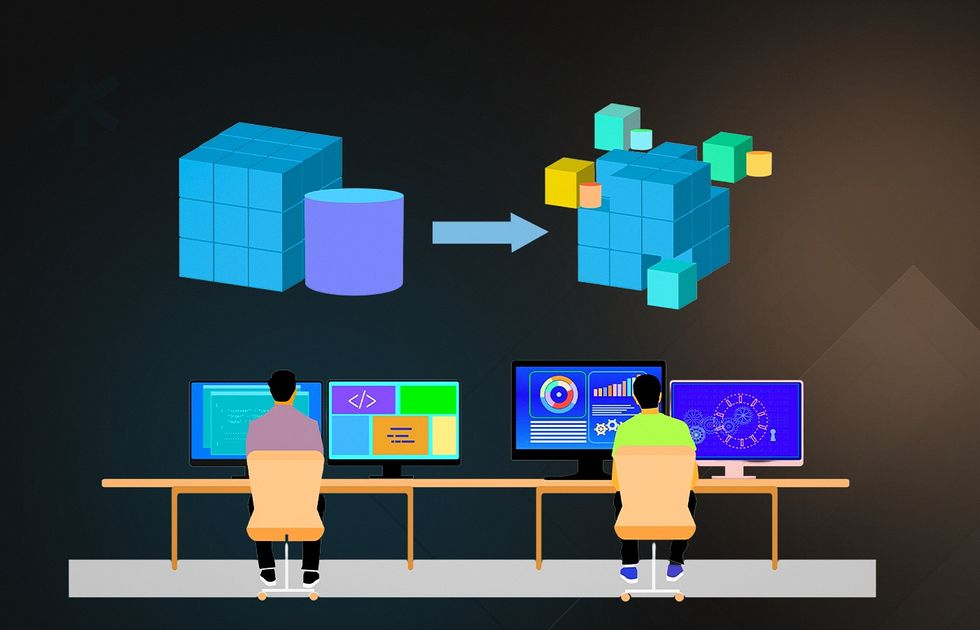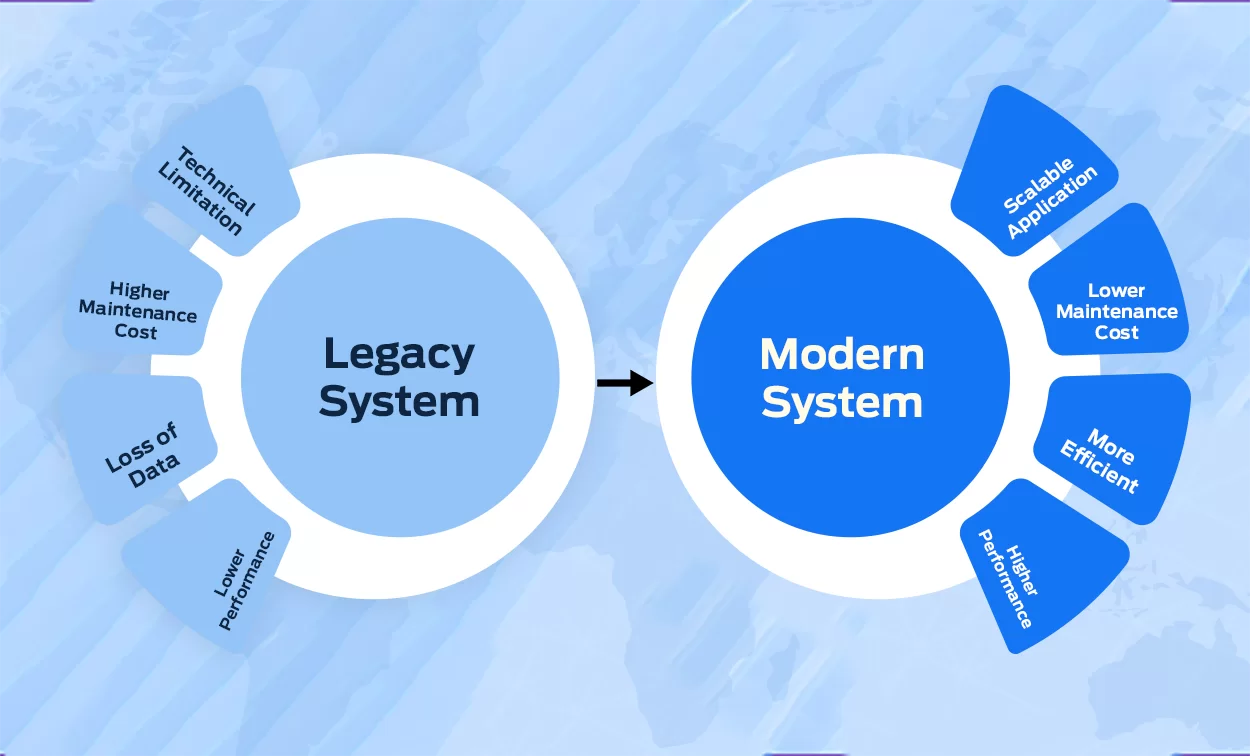A legacy system is an outdated technology or application still in use today, often critical to an organization’s operations. So, they face several obstacles to connecting them with other business systems, especially modern SaaS applications. In this article, let’s discover what legacy system challenges are and how to integrate them with modern SaaS applications in simple ways
The Legacy system challenges

Legacy systems, often built on older technology, struggle with compatibility, making seamless integration with SaaS platforms difficult. These systems may not support modern APIs or data formats, leading to data flow and communication issues. Furthermore, aligning the security and compliance standards of legacy systems with the cloud-based nature of SaaS applications introduces potential risks. The skills gap also presents a problem, as expertise in older technologies becomes scarce. Successfully bridging this gap requires careful planning and the use of appropriate tools and strategies to ensure both systems can work together effectively without compromising security or functionality.
Why don’t we buy a new one?
Organizations often hesitate to replace legacy systems with modern SaaS applications due to several compelling reasons. The high transition costs, complex data migration, and the challenge of matching deep customization needs make switching a daunting task. Additionally, regulatory and compliance requirements add another layer of complexity, while concerns over business continuity and organizational resistance to change further deter companies from leaping. As a result, many prefer a gradual integration approach to leverage new technologies while mitigating the risks and disruptions associated with a full-scale replacement.
How do we do?

If replacing legacy systems with modern SaaS applications is not viable due to cost, customization, or compliance challenges, connecting them to facilitate data transfer offers a viable solution. This strategy allows organizations to retain their existing infrastructure while tapping into the advantages of SaaS technologies. By integrating legacy and modern systems, businesses can achieve improved efficiency and data management without the disruption or expense of a complete system overhaul, enabling a smoother transition to newer technologies at their own pace.
What is a modern SaaS application?
A modern SaaS application is a cloud-based service that allows users to access software over the internet on a subscription basis. These applications eliminate the need for traditional installation and maintenance, offering automatic updates, scalability, and remote accessibility. Designed to support various business functions, such as CRM, HR, and accounting, SaaS applications provide a cost-effective, flexible solution for businesses to leverage advanced technology without significant investment in physical infrastructure.
Benefits of integrating legacy systems with modern applications
Integrating legacy systems with modern applications enhances efficiency by automating processes and reducing manual tasks, improves real-time data accessibility across platforms for better decision-making, and increases flexibility. This solution allows businesses to adopt new technologies without discarding their existing infrastructure.
It also offers cost benefits by maximizing current investments and improving customer service with new functionalities. Additionally, it enhances security through advanced measures and gives businesses a competitive edge by making them more agile and ready to leverage the latest technological advancements. This strategic approach provides a balanced path to modernization, merging the best of old and new systems.
Integration strategies
Several strategies can help businesses connect legacy systems with modern applications. Each has its own set of benefits and considerations. Let’s take a closer look at the three primary integration strategies: direct integration, custom API development, and middleware integration.
Direct integration
Direct integration involves creating a direct connection between the legacy system and the modern application. This approach is often straightforward and can offer high performance, as it eliminates the need for intermediary layers.
However, direct integration can be complex to implement, especially when dealing with older systems that may not readily support modern integration protocols. It requires in-depth knowledge of both the legacy system and the new application, and any updates to either system can necessitate reevaluation and adjustment of the integration.
Custom API Development
Custom API development is another strategy where custom application programming interfaces (APIs) are developed specifically to enable communication between legacy and modern systems. This method provides flexibility, allowing tailored integration that precisely meets the organization’s needs. Custom APIs can optimize data exchange and functionality between systems.
However, this approach requires significant development effort, expertise, and ongoing maintenance to address any changes or updates in the connected systems.
Middleware integration
Middleware integration involves using a third-party software layer, or middleware, to facilitate communication between the legacy system and the modern application. Middleware acts as a translator, converting data and requests between formats that each system can understand. This strategy can simplify the integration process, providing a more adaptable and maintainable solution that can easily connect multiple systems.
While middleware can reduce the complexity of direct connections, it introduces an additional component that needs to be managed and can increase the overall system latency.
Keep this in mind before integrating legacy systems with other applications
Before integrating legacy systems with modern SaaS applications, it’s crucial to evaluate several key factors to ensure a successful implementation.
- Assess the legacy system’s architecture for compatibility and integration points, focusing on maintaining data integrity during the migration or synchronization process.
- Security considerations are paramount, aiming to prevent vulnerabilities and ensure compliance, especially in regulated industries.
- Anticipate the operational impact and plan for potential disruptions to minimize downtime. Conduct a cost-benefit analysis to confirm the integration’s value aligns with business objectives.
- Finally, determine the need for custom development or middleware to address the complexity and scalability of the integration, choosing the appropriate strategy and tools for a streamlined process.
HexaSync Integration Platform: The global integration Provider
The HexaSync platform, launched by Beehexa, is the global iPaaS integration platform that allows businesses to streamline their operations. It works as middleware to help organizations connect and integrate legacy systems with modern SaaS applications via APIs and access tokens. Using HexaSync, users can monitor the flow of data transfers from the source location to the destination location. So, they can detect the problems and solve them if they are not technical.
Integrating legacy systems and modern SaaS applications by using the HexaSync integration platform is suitable for enterprises that don’t have the expertise in technology to build and maintain the integrated solution. Because of HexaSync’s flexibility, users can customize their integration requirements to their specific needs and budgets.
Conclusion
In conclusion, integrating legacy systems with modern SaaS applications is crucial for enhancing business efficiency and competitiveness. Selecting an appropriate integration strategy and addressing compatibility, security, and cost considerations can mitigate challenges. If you have any questions about integration or want to connect your legacy systems with other business applications, please contact us via email.